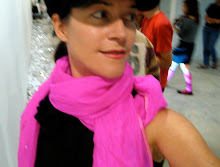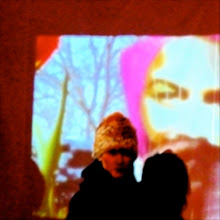When I think of mountains I think of quests, of looking and climbing, of pushing and expanding horizons. The mountain started of in the metaphorical zone, getting to Singapore was a feat. Finding what I wanted — a push, getting what I needed as far as a place where I could open my horizons and expand my daughter’s views — much of the goal.
It felt like a mountain. In many ways I dealt with the task by climbing as many hills as possible while I waited in San Francisco. The walks up, laptop over shoulder and emails in limbo, breath and lungs expanding and steepness to physically confront helped in the waiting.
When we finally arrived, the hilltop grass of ADM immediately called for a Sisyphus experience. In the research around Sysiphus, Camus and the solar theory led me out of the repetitive negativity that is so often associated with his myth, and my perspective broadened and narrowed. I needed to take a first step, climb something that could expand my views further. Map it. Experience it.
The opportunity came in a visit to Krabi where a 1300 step climb to a temple of a Buddhapada — a footprint of Buddha — made sense to me as an ideal first step. With my GPS and camera and openness to the space, I climbed. What could have been an hour trek and a simple task of documentation was instead what I had hoped for. Suddenly the views opened up
and my need to research and figure out the nature of the journey inspired me.
This space, a hilltop set aside for anyone to walk up, paved with steps, jeweled with stupas, through a jungle up a steep incline, created to be experienced is a mirror on a micro level of temples and monuments, mountains and hilltops throughout Asia. The mountain as religion. The place where earth and sky meet or where earth reaches up to sky, where the two realms seem to touch has been a place of tension and speculation, legend and myth, hermit and pilgrim all around the world.
To understand the space, the pilgrim must climb. In the act of climbing, you become one of many who have climbed before, of who built, of who will climb in the future. the path becomes a thread like a timeline that you enter into and become part of. You engage in unity. You share identity. You become part of a path. The path is a metaphor to enlightenment. The climb a rite of passage, the individual part of the larger flow of humanity.
It felt like a mountain. In many ways I dealt with the task by climbing as many hills as possible while I waited in San Francisco. The walks up, laptop over shoulder and emails in limbo, breath and lungs expanding and steepness to physically confront helped in the waiting.
When we finally arrived, the hilltop grass of ADM immediately called for a Sisyphus experience. In the research around Sysiphus, Camus and the solar theory led me out of the repetitive negativity that is so often associated with his myth, and my perspective broadened and narrowed. I needed to take a first step, climb something that could expand my views further. Map it. Experience it.
The opportunity came in a visit to Krabi where a 1300 step climb to a temple of a Buddhapada — a footprint of Buddha — made sense to me as an ideal first step. With my GPS and camera and openness to the space, I climbed. What could have been an hour trek and a simple task of documentation was instead what I had hoped for. Suddenly the views opened up
and my need to research and figure out the nature of the journey inspired me.
This space, a hilltop set aside for anyone to walk up, paved with steps, jeweled with stupas, through a jungle up a steep incline, created to be experienced is a mirror on a micro level of temples and monuments, mountains and hilltops throughout Asia. The mountain as religion. The place where earth and sky meet or where earth reaches up to sky, where the two realms seem to touch has been a place of tension and speculation, legend and myth, hermit and pilgrim all around the world.
To understand the space, the pilgrim must climb. In the act of climbing, you become one of many who have climbed before, of who built, of who will climb in the future. the path becomes a thread like a timeline that you enter into and become part of. You engage in unity. You share identity. You become part of a path. The path is a metaphor to enlightenment. The climb a rite of passage, the individual part of the larger flow of humanity.

GPS map of the climb
Wat Tham Sua (Tiger Cave Temple) named after a rock formation resembling a tiger paw, is a forest temple in southern Thailand. The main hall inside the cave, was built for practicing meditation, while a circular path leading up from the temple, is a 300-meter high staircase of 1300 steps leading to a footprint of Buddha, a Buddhapada. Statues of Buddhas accompanying the footprint are visible from the surrounding valley. This temple complex not is a religious site for the 260 monks and nuns who live and worship there, and also an archaeological area of interest with natural caves in an overgrown jungle valley where stone tools, pottery remains and the mold for making Buddha footprints have been excavated.
The monks and nuns follow Phra Archan Jumnean Seelasettho, who teaches the meditation technique Vipassana (insight meditation). A synonym for Vipassana is paccakkha, meaning “before the eyes,” which refers to direct experiential perception. Exactly the kind of experience trekking up a mountain of stairs might be seen as being. This type of direct perception, is directly opposed to knowledge derived from reasoning or argument.

In the spirit of Vipassana, and as an experience designer, the challenge of trekking up 1300 steps to have Buddha’s footprint before my eyes, brought me to Krabi. In order to capture and document the experience, I brought a Garmin GPS Map 60CSX w/ sensors & maps,
a still camera, and a video camera. The 60CSX can record altitude shifts, as well as global positioning. How effective will the GPS be, when used in conjunction with photography and video, in capturing the walk up the mountain?
Being immersed in an experience while mapping and documenting gave me multiple levels of experiental data to examine. From the data collected I had a large amount of raw material to work with to create a translation of the experience. This project was a first step towards a series of projects. With the possibilities determined of the technology, I have gone on to map Angkor Wat, Borobodur, and other monuments created to be walked, as well as local festivals and processions, pilgrimages and historical routes.





No comments:
Post a Comment